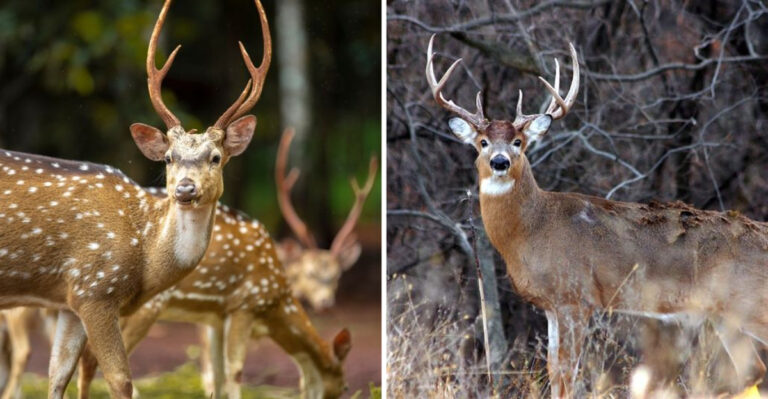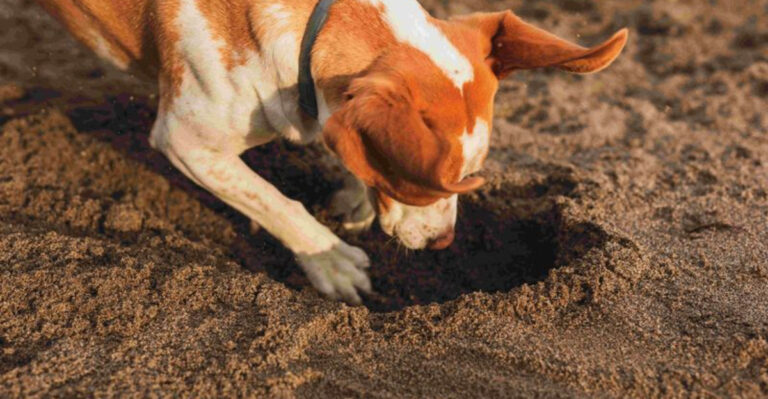One Of The Largest Burmese Pythons Ever Seen Captured In Florida
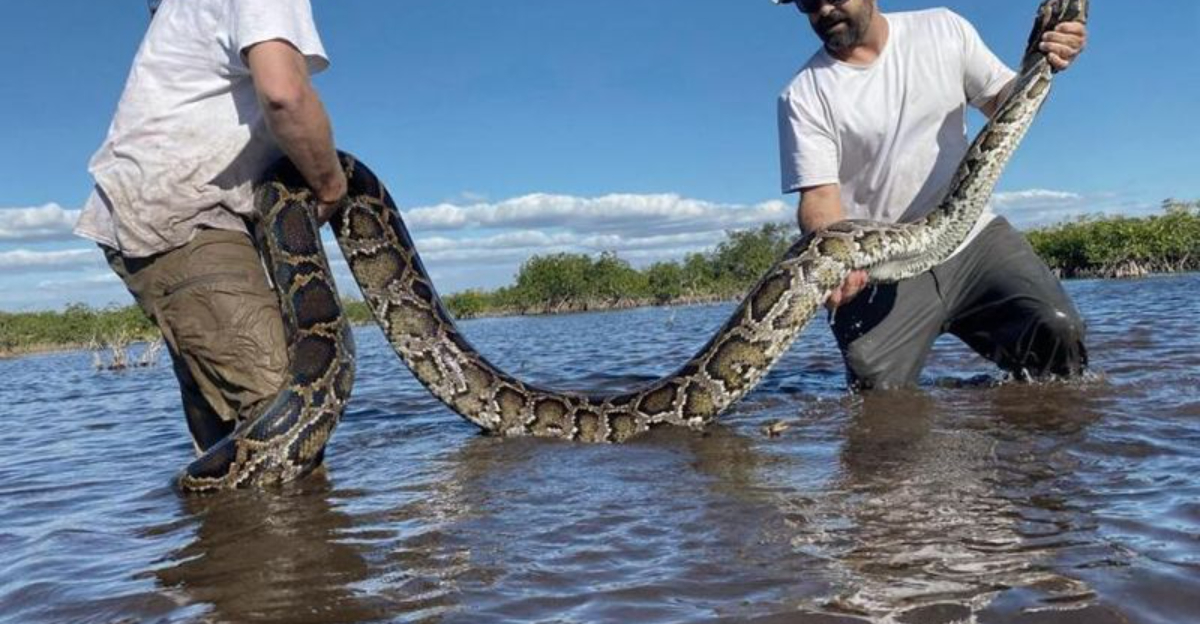
Florida’s battle against invasive species took a dramatic turn with the capture of one of the largest Burmese pythons ever recorded.
This monster snake, weighing a jaw-dropping 215 pounds and stretching nearly 18 feet, represents a significant victory in the ongoing fight to protect Florida’s delicate ecosystem.
The discovery highlights the growing threat these massive reptiles pose to native wildlife throughout the Sunshine State.
1. 215 lb Burmese Python Captured In Florida
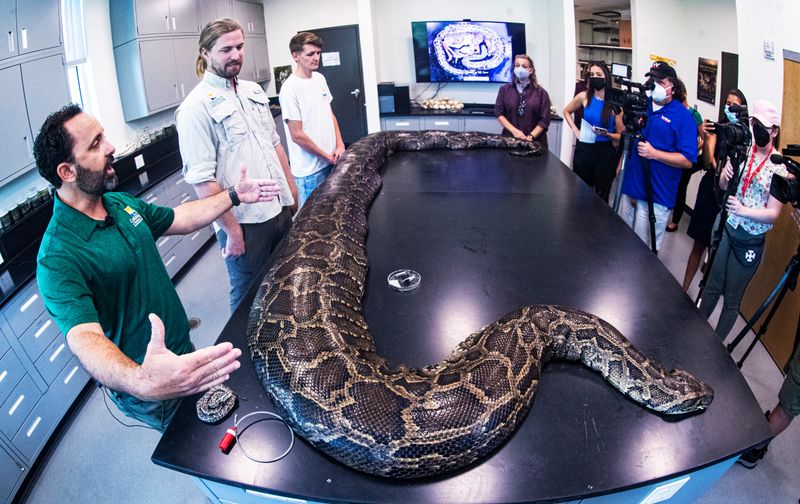
Jaws dropped when biologists from the Conservancy of Southwest Florida hauled in this record-breaking behemoth. At 215 pounds and approximately 18 feet long, this python made headlines across the country.
To put this in perspective, that’s heavier than many adult humans. The capture required multiple skilled handlers working together to safely contain the massive reptile.
2. Experts Weigh In

Wildlife specialists from the Florida Fish and Wildlife Conservation Commission were astonished by the snake’s dimensions. They noted this capture represents a significant milestone in understanding the growth potential of these invasive predators.
Scientists are studying the specimen to gather crucial data on feeding habits and territory range. Their findings will shape future conservation strategies across the state.
3. The Invasive Nature Of Burmese Pythons In Florida
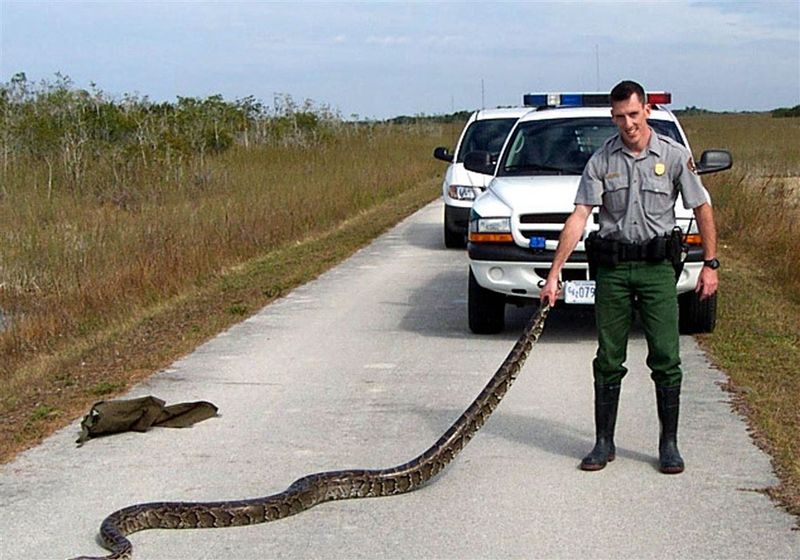
These reptilian invaders first established themselves in Florida during the 1990s, likely released by overwhelmed pet owners. Since then, they’ve multiplied unchecked, with no natural predators to keep numbers in control.
The Everglades ecosystem, having evolved without snake predators of this size, offers perfect hunting conditions. Native animals have no evolved defenses against these stealthy hunters.
4. Impact On Local Wildlife: Endangered Species At Risk
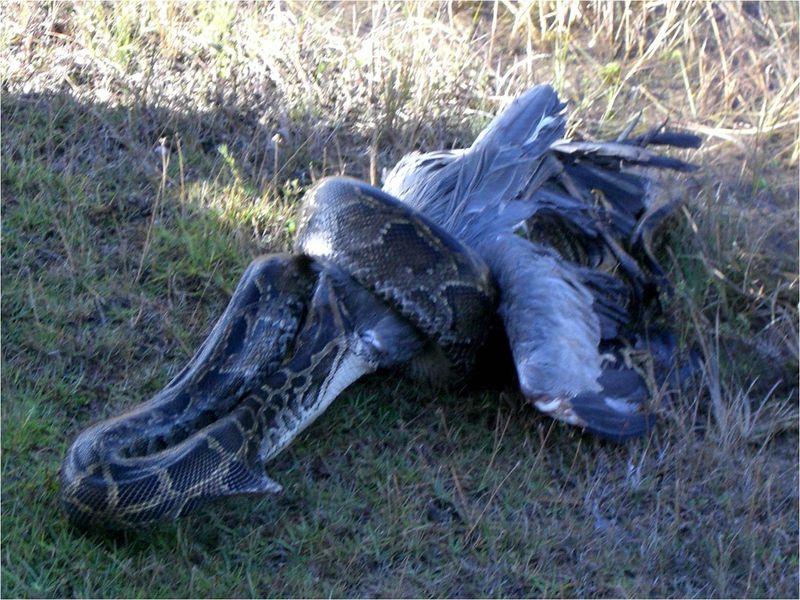
Florida’s unique animal populations face unprecedented pressure from these apex predators. Small mammals like marsh rabbits and raccoons have virtually disappeared from some areas where pythons roam freely.
Endangered birds, including wood storks and herons, frequently fall victim to ambush attacks. Even alligators aren’t safe, as pythons regularly challenge these native predators for territory and food sources.
5. The Snake’s Growing Population In The Everglades

Researchers estimate tens of thousands of Burmese pythons now call the Everglades home. Their population has exploded across more than 1,000 square miles of protected wilderness in just three decades.
Satellite tracking reveals these snakes move strategically through waterways, expanding their territory each year. Sightings now regularly occur in populated areas surrounding the Everglades, alarming residents and wildlife officials alike.
6. Burmese Pythons Can Reproduce Rapidly
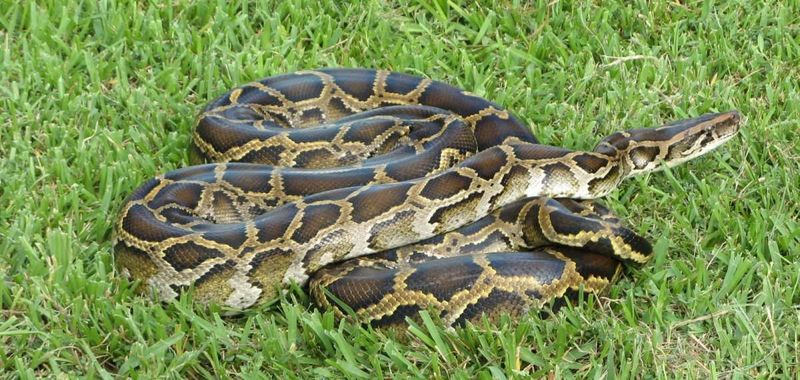
Female pythons lay clutches containing 50-100 eggs annually, creating population explosions that overwhelm control efforts. A single successful nest can introduce dozens of new predators into the ecosystem each breeding cycle.
Young pythons boast impressive 80% survival rates in Florida’s hospitable climate. With few natural threats and abundant prey, hatchlings quickly grow into efficient hunters, reaching breeding size within just three years.
7. The Struggle To Control Them In Florida
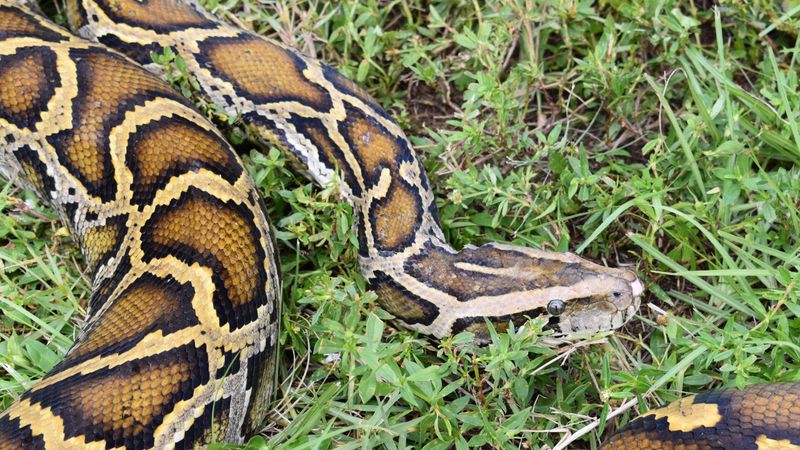
Python hunting competitions now attract thousands of participants annually, offering cash prizes for the largest captures. Despite these efforts, experts believe only a small fraction of the total population is removed each year.
Traditional trapping methods prove largely ineffective against these cunning reptiles. Innovative approaches include training specialized detection dogs and deploying scout snakes with radio transmitters to locate breeding aggregations.
8. Burmese Pythons Are One Of The Largest Snake Species
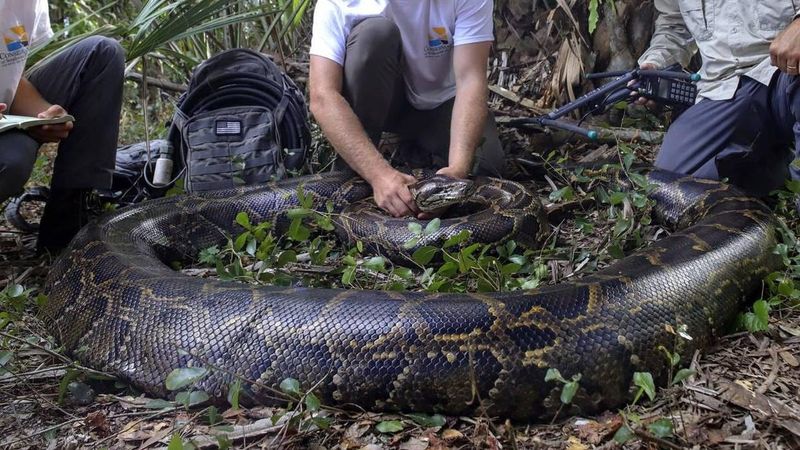
These magnificent reptiles rank among the world’s five largest snake species. In their native Asian habitats, specimens regularly reach 12-15 feet, though Florida’s abundant food sources allow for exceptional growth.
Their massive bodies can expand tremendously to swallow prey whole. A fully-grown python can maintain a girth comparable to a telephone pole, with muscles powerful enough to constrict prey many times its weight.
9. Non-Venomous But Dangerous
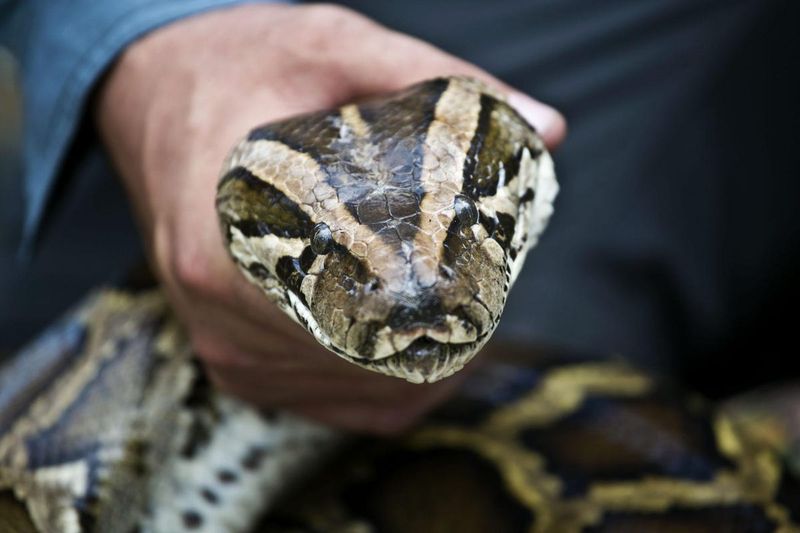
Unlike rattlesnakes or coral snakes, Burmese pythons kill through powerful constriction rather than venom. Their hunting strategy involves ambushing prey, striking with lightning speed, then wrapping powerful coils to cut off blood flow.
Humans rarely face attacks, but caution remains essential. Large pythons can potentially see small children or pets as prey, making proper handling techniques crucial for wildlife workers and property owners alike.
10. Native To Southeast Asia: How They Ended Up In Florida

Originally from the tropical forests of Thailand, Myanmar, and neighboring countries, these snakes thrived as exotic pets during the 1980s-90s reptile boom. Hurricane Andrew’s destruction in 1992 released countless specimens from damaged breeding facilities.
Countless more were deliberately abandoned when owners couldn’t manage their rapid growth. The warm, humid Florida climate proved perfect for their establishment, creating ideal conditions for an invasive catastrophe.
11. They Can Live For Decades In The Wild

With lifespans reaching 20-25 years, established pythons continue breeding for generations. This longevity compounds their ecological impact, as a single snake might consume thousands of native animals throughout its lifetime.
Older specimens grow increasingly difficult to locate and capture. Their hunting patterns become more sophisticated with age, allowing them to avoid human detection while continuing to devastate wildlife populations across wide territories.
12. Highly Effective Hunters: A Range Of Prey
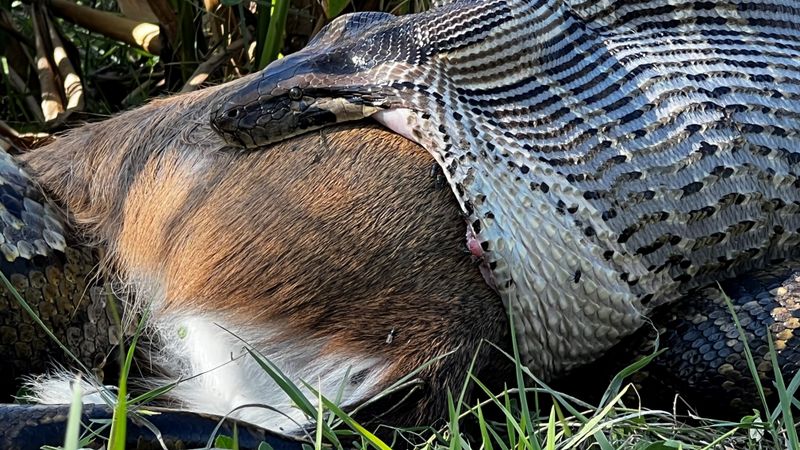
Equipped with heat-sensing pits along their jaws, pythons detect warm-blooded prey with astonishing accuracy. Their expandable jaws allow consumption of animals five times wider than their head circumference.
Florida pythons have been documented consuming deer, alligators, and even panthers! Research shows they’re opportunistic feeders, adapting their hunting strategies based on available prey and seasonal patterns throughout the Everglades ecosystem.
13. Burmese Pythons Have Few Natural Predators

Adult pythons face virtually no threats in Florida’s wilderness. Even large alligators typically avoid confrontations with these formidable opponents. This predator-free existence allows unchecked population growth across their expanding range.
Only juvenile pythons face significant natural dangers. Bobcats, hawks, and other predators occasionally capture young snakes, but once they reach about seven feet, they become essentially untouchable in the wild Florida ecosystem.


